TAG HEUER introduces its New In-house Movement, Calibre 1969
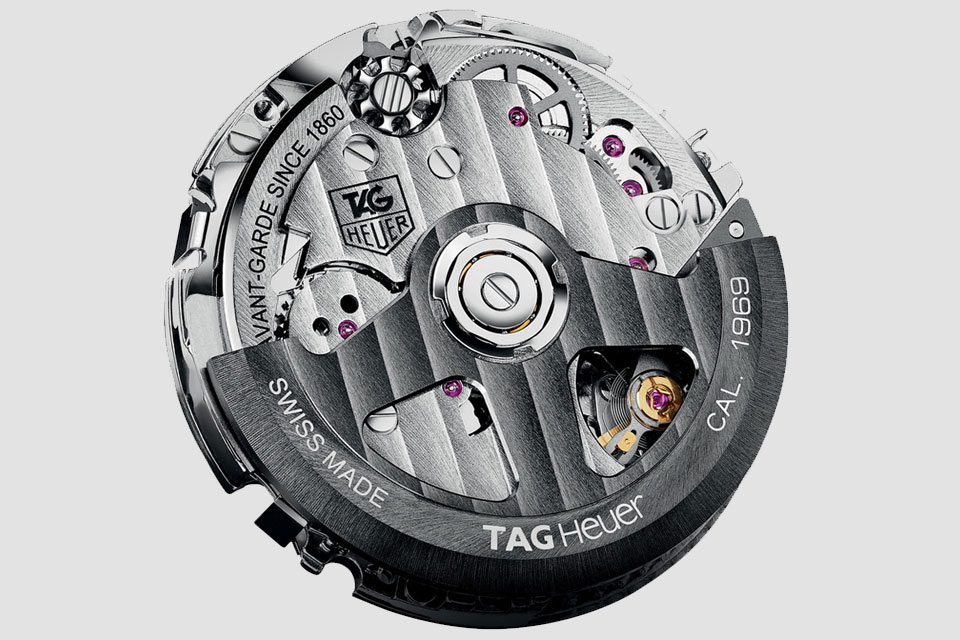
Heuer had a great history in chronographs, especially with the Calibre 11, and seems to be moving towards a great future. After the presentation in 2009 of its first in-house movement since decades, the calibre 1887, TAG Heuer comes back with a very interesting offer in the market of in-house, self-winding chronograph movements. After all the debates around the calibre 11, and after the discussions about the calibre 1887 and whether or not it is a proper in-house movement, this 1969 could be the one to bring everyone into agreement. Let’s see why.
We here at Monochrome are big chronograph enthusiasts, whether vintage or modern, like the Omega Speedmaster for its historical importance, or the Lange & Söhne Double Split for its perfection (we reviewed it for you here). The announcement a few days ago by TAG Heuer of a new movement had, of course, attracted our curiosity. And let’s be clear about it; we’re looking at an impressive engine compared to TAG’s previous standards. But before having a closer look at the new calibre 1969, let’s have a quick flash back on calibers 11 and 1887.
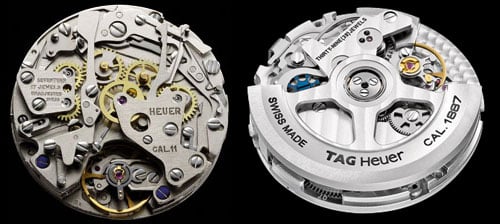
Quick history
How can we speak about Heuer’s chronographs unless we first have a look at a tremendous part of this brand’s history, namely the calibre 11. Without getting drawn back into one of the greatest debates in the world of watch enthusiasts, let’s agree that this engine is one of the three first self-winding chronographs, together with the Zenith El Primero and the Seiko 6139. The Heuer calibre 11 was introduced in 1969 (I think everyone understands the reference of this date here…), which was a milestone for the brands involved (see here).
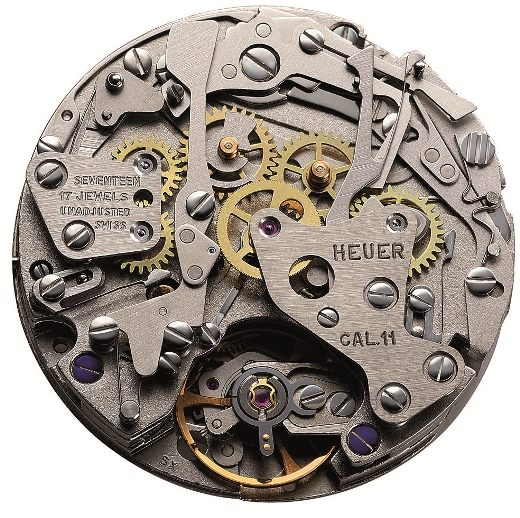
Based on a Büren micro-rotor movement and developed in association with Dubois-Depraz, the calibre 11 was shared with Breitling and Hamilton. It has been launched in the mighty Monaco and also in Carrera and Autavia range.
Then in 2009, TAG Heuer offered the world a brand new movement, calibre 1887, called “in-house,” meaning that it should be 100% designed and developed by TAG, creating another great controversy.
The question around this movement wasn’t about the quality or the technical specifications, but on the fact that it was based on a Seiko 6S37. As we told you earlier (read our article here), the debate was only running on poor communication by TAG Heuer. Many brands, and not only minor or cheap ones, share movements from other manufacturers. So have done Patek and Vacheron. In the end TAG Heuer have a very good movement, which is well designed, pleasant to use and offers interesting characteristics like a column-wheel.
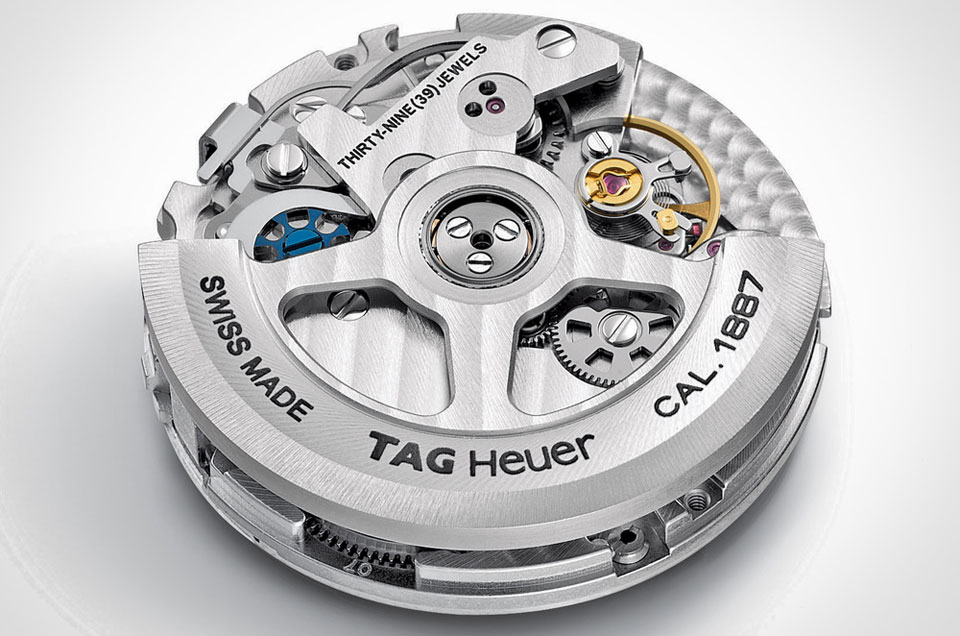
The TAG Heuer 1969
The answer from TAG Heuer against these critics is an attractive movement, designed and developed completely in-house. Of course this shouldn’t be seen as the only reason for this announcement. An in-house movement definitely gives a high-end image to a brand and grabs the interest of the community of watch collectors, but also counteracts the future shortage of movements supplied by ETA/Valjoux.
Of course the name 1969 is a tribute to the historical calibre 11. And a fine tribute it is. We are talking about a serious competitor here, qualified to face Omega with its 9300 or Rolex with the well known 4130. Here is the new strategy of TAG Heuer for going back in the game of chronographs.
The 1969 could be seen as an improvement of the work done with the 1887. First, the chronograph system is based on a vertical clutch instead of an oscillating pinion, meaning a more precise start of the second hand, and therefore more accuracy in measurement of time laps. Besides these technical aspects, the combination of a column-wheel and a vertical clutch (just like the Montblanc calibers LL100 and MB series of movements used in the Rieussec collection) is often seen as the most desirable configuration in a chronograph movement.
Another nice update, is the position of sub-counters, now based on a 3-6-9 configuration instead of a 6-9-12 display in the 1887. I know it sounds very personal, but this configuration is just more balanced, due to the symmetry it gives to the dial. Talking about aesthetics, this 1969 appears well finished with “Côtes de Genève” on both bridges and oscillating weight, polished beveled edges and a contrasting tungsten plated rotor. The column-wheel is nicely highlighted, but as seen on the Omega caliber 9300, the chronograph system, including levers and wheels, is mostly hidden.
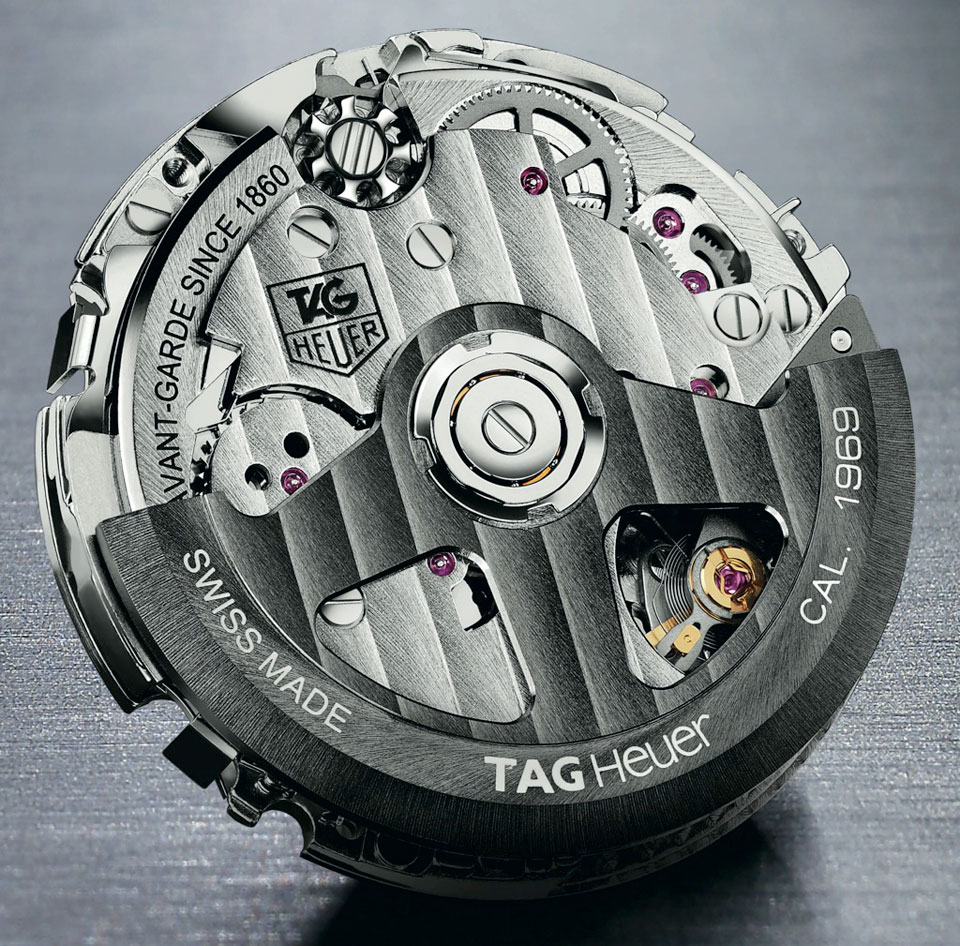
Conclusion
TAG Heuer’s new movement looks pretty impressive on paper and I’m honestly excited to have such a Carrera or Monaco in my hands. Specs are in line with competitors, considering the corresponding movements from Rolex, Breitling, Omega or Montblanc. But for a brand that intends to be the largest producer of in-house chronographs, will it be enough? Yes, TAG wants to produce an outstanding figure of 100,000 timepieces per year powered by the 1887 and 1969 calibres by the end of 2016. Let’s see where it all stands in a few months, when we can see what TAG Heuer shows us during Baselworld.
More details at www.tagheuer.com.




1 response
Good Article…great pics and intel…